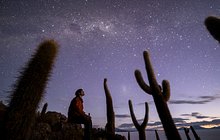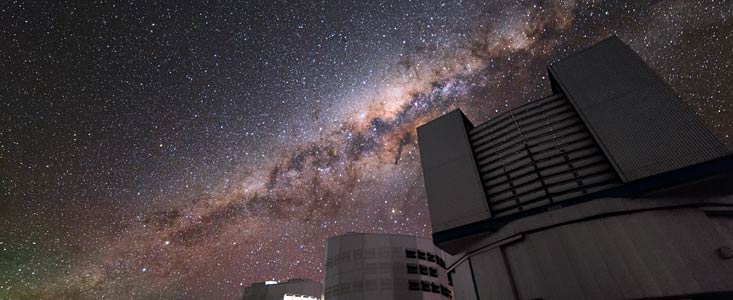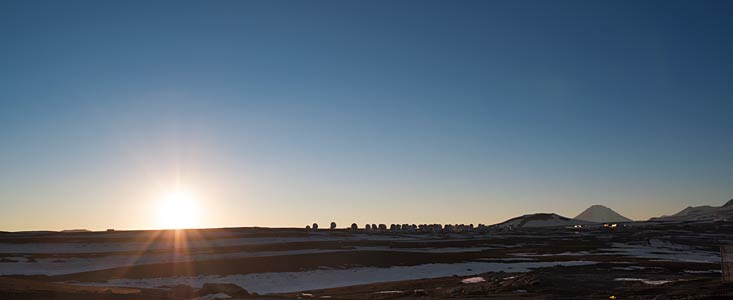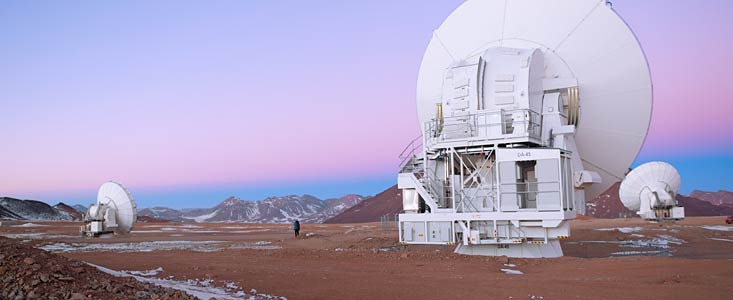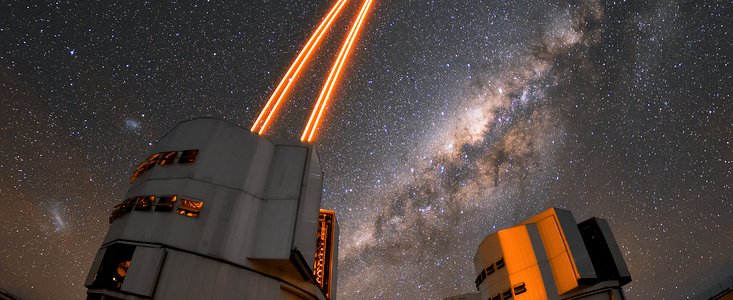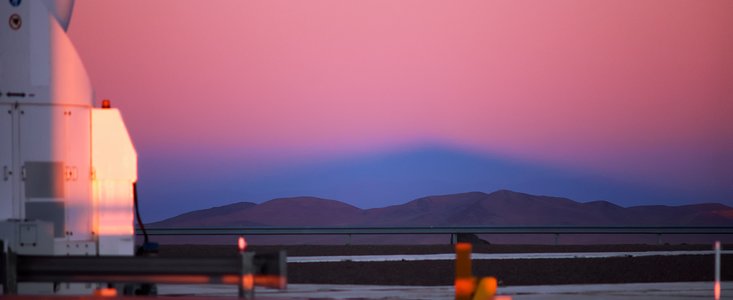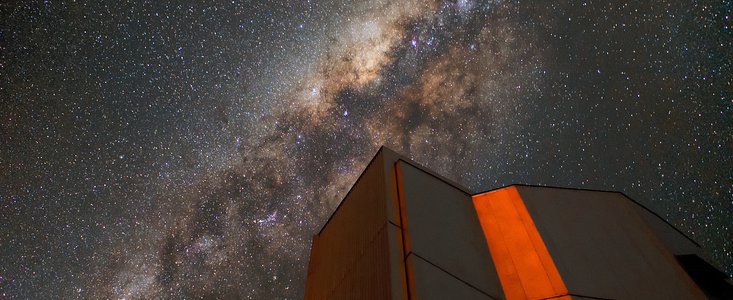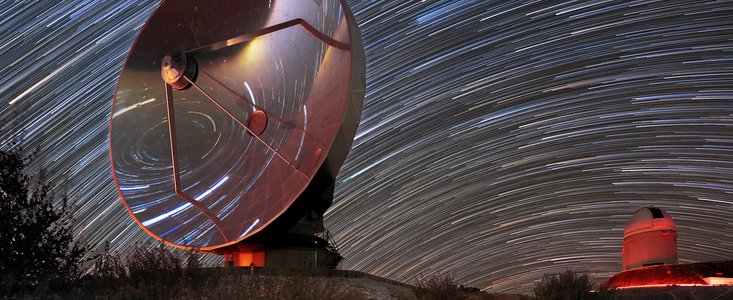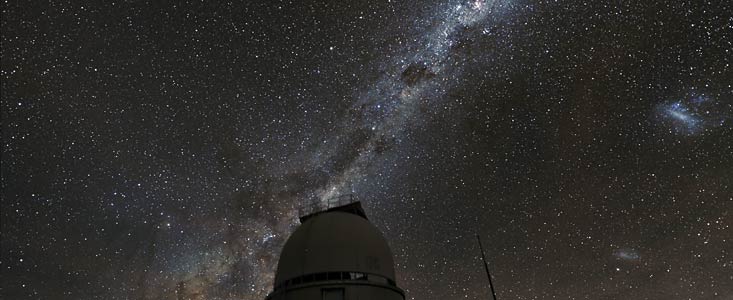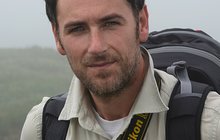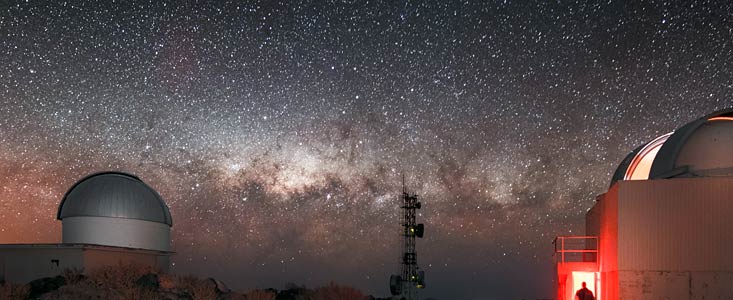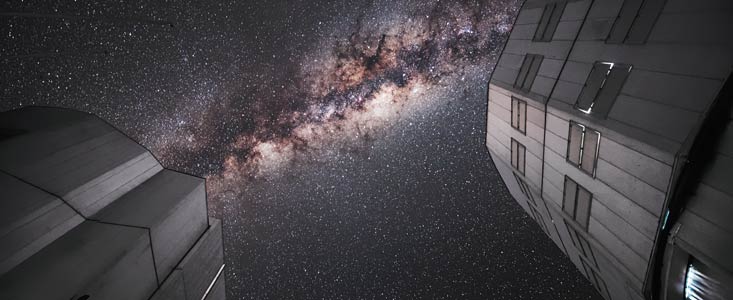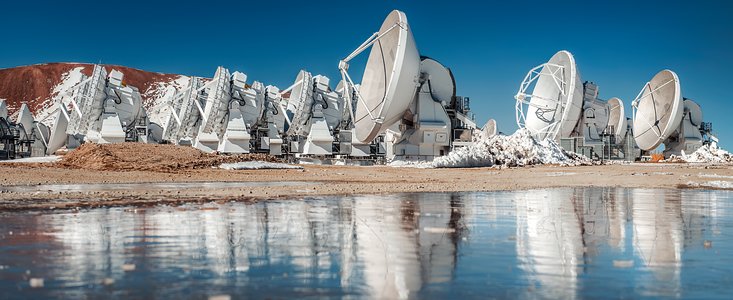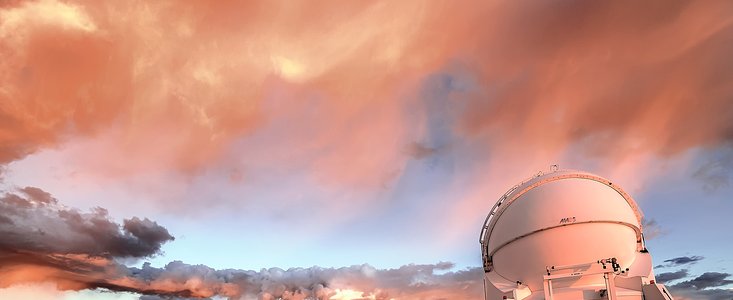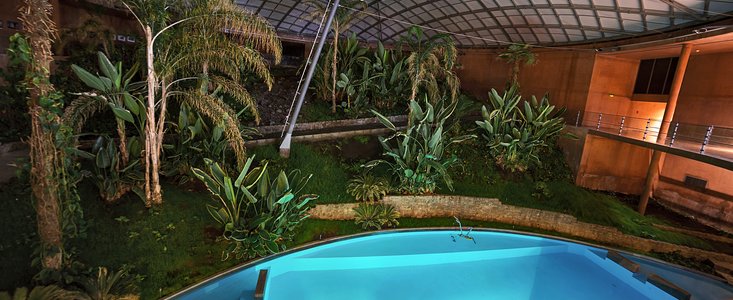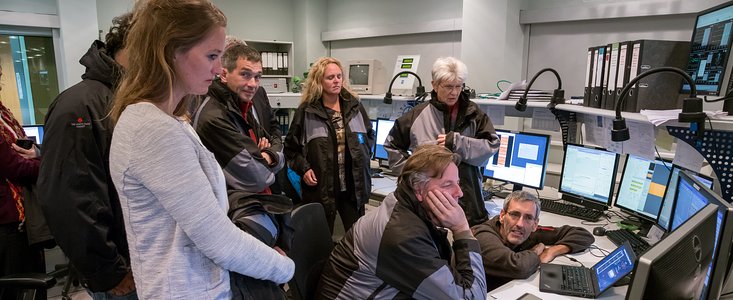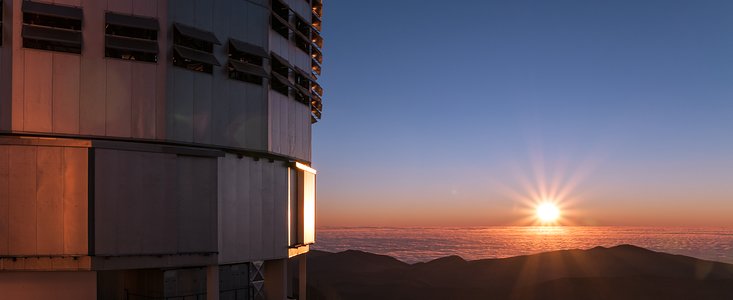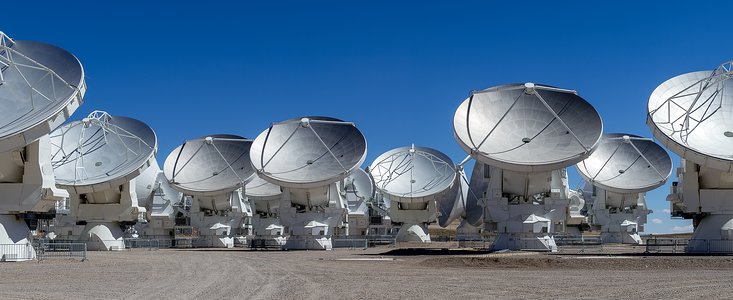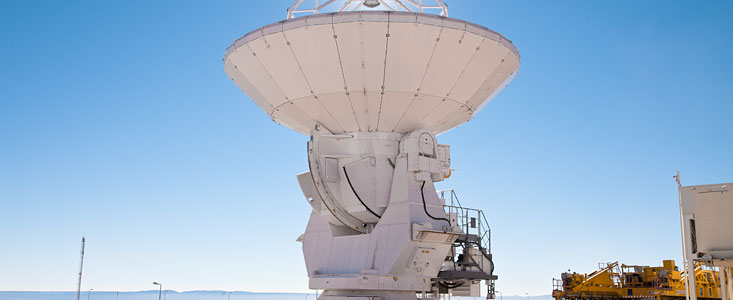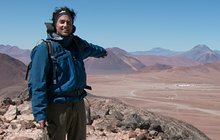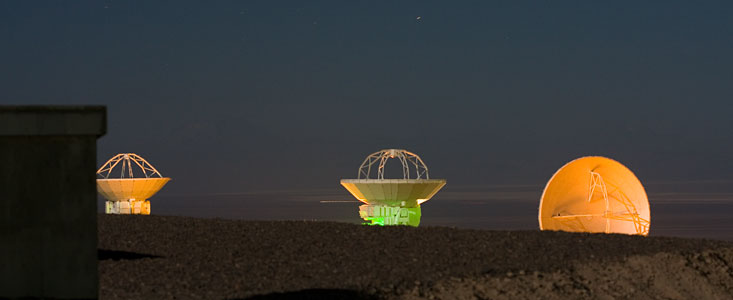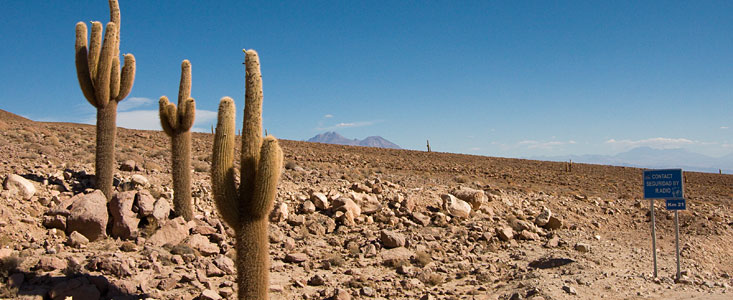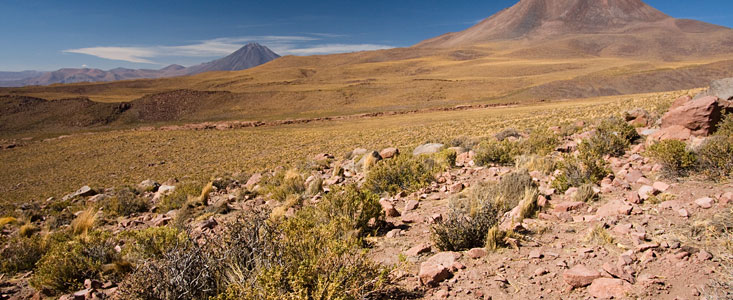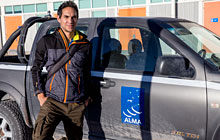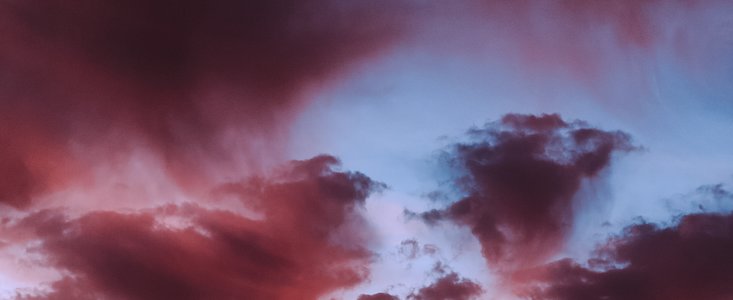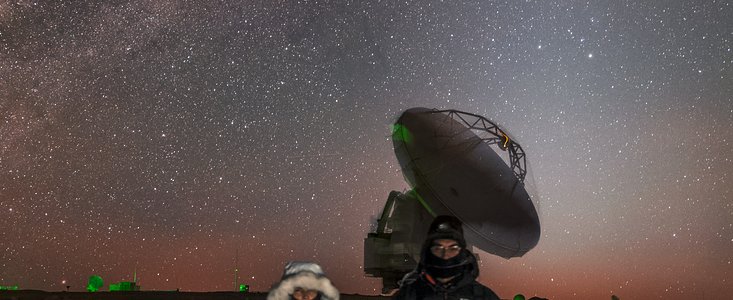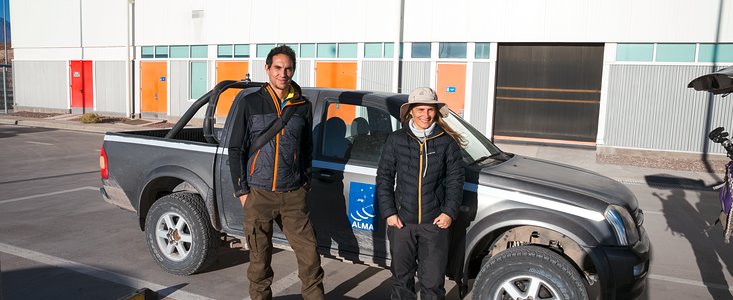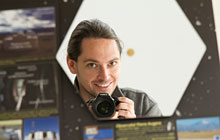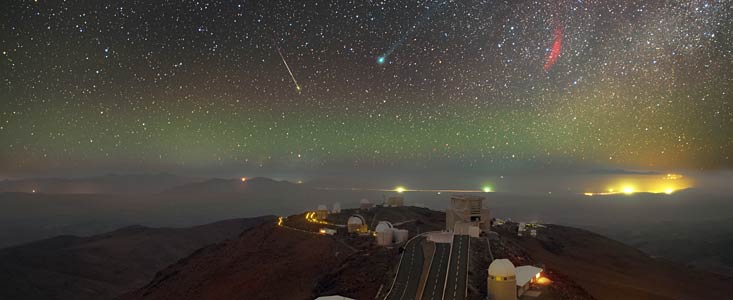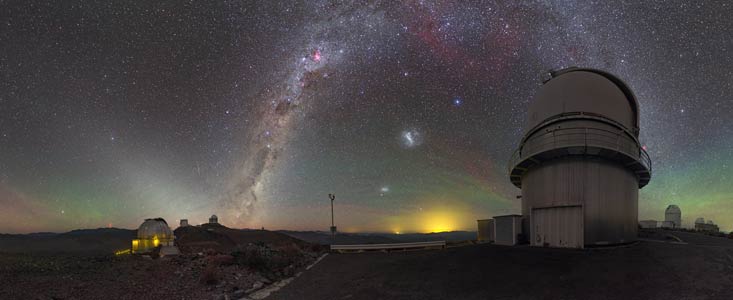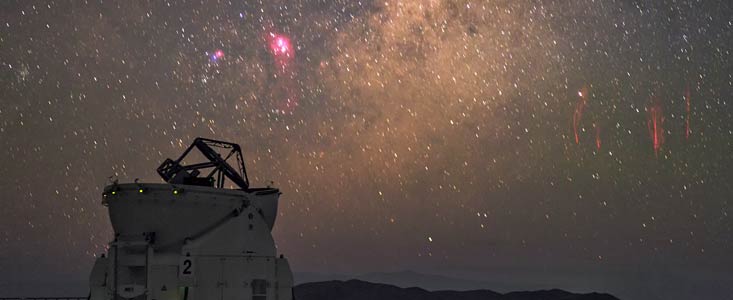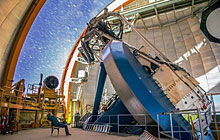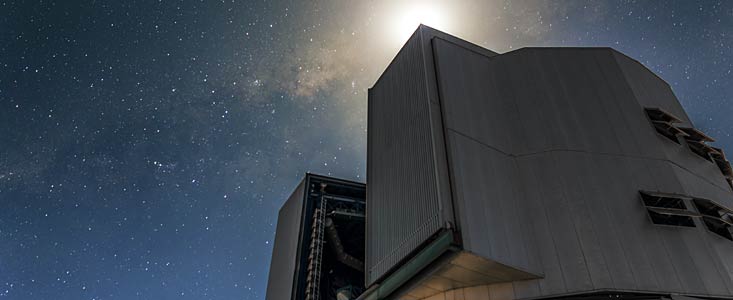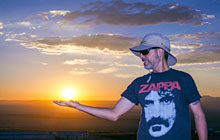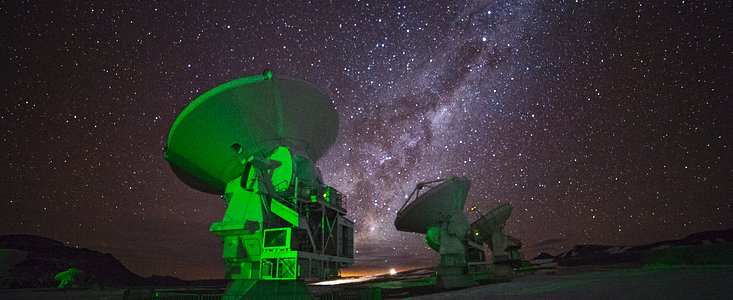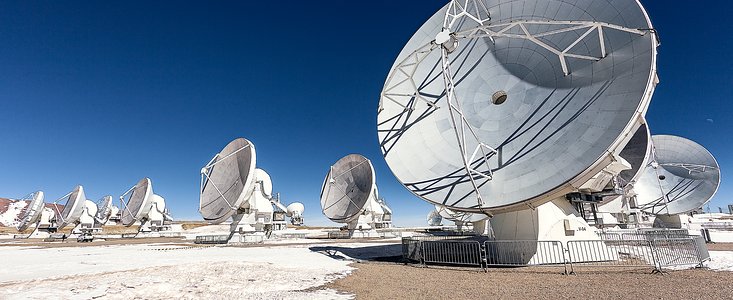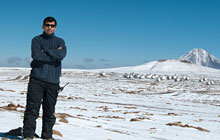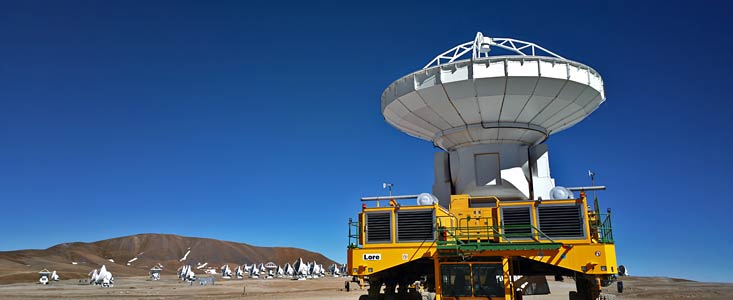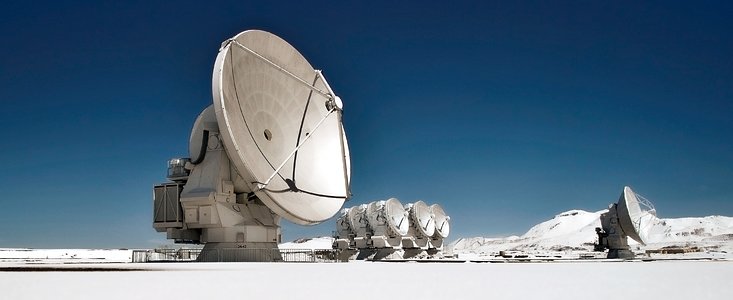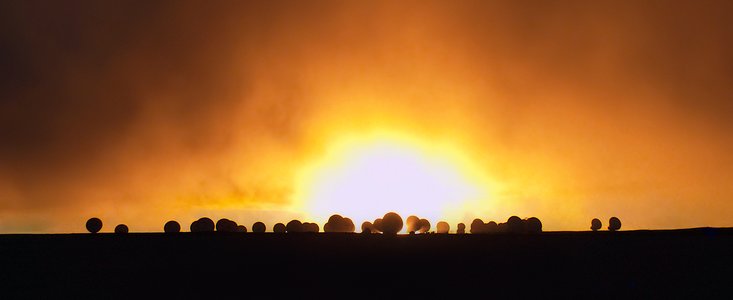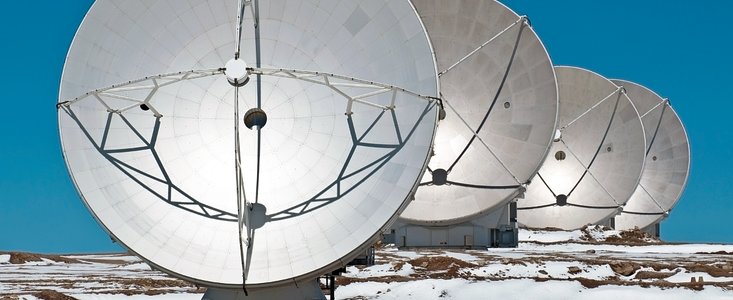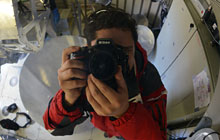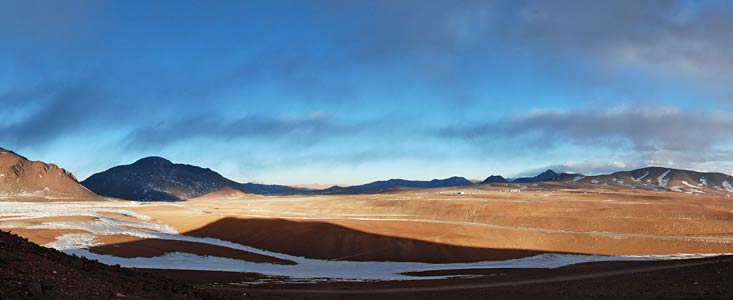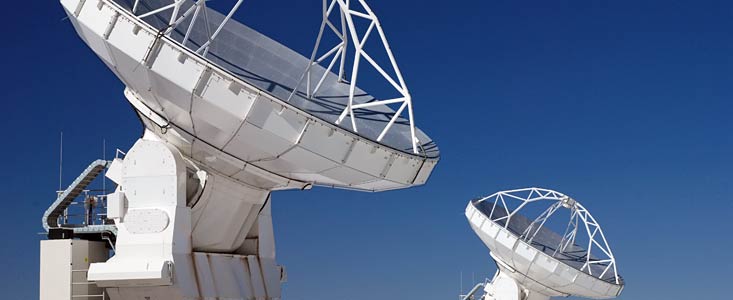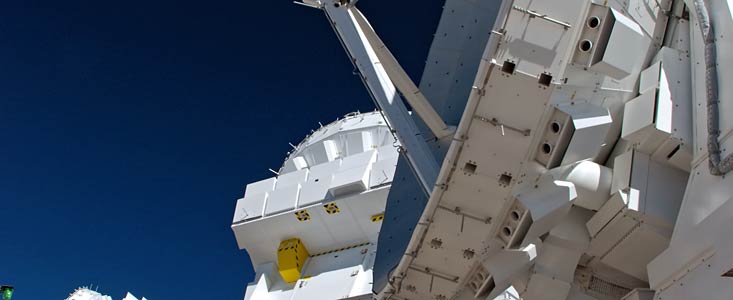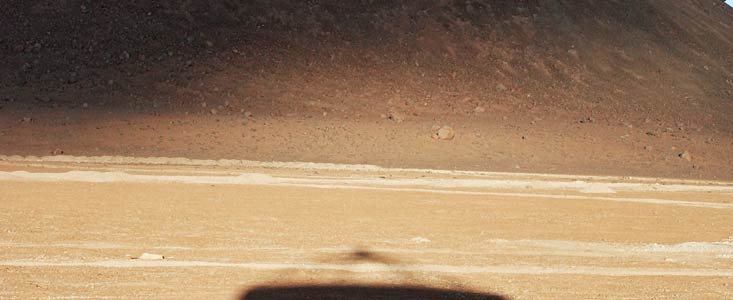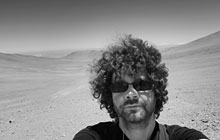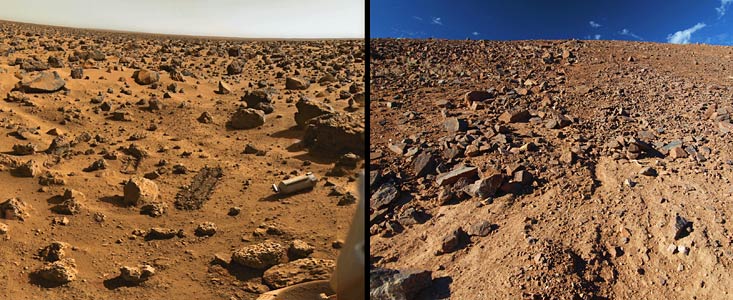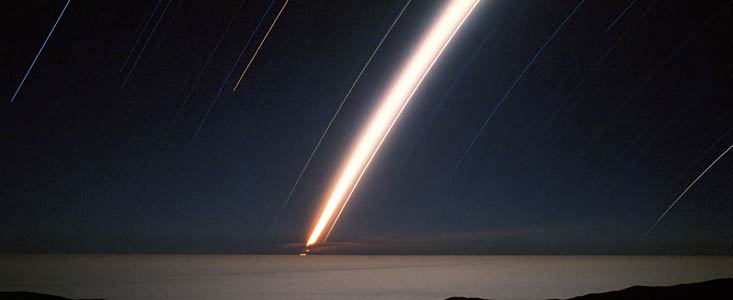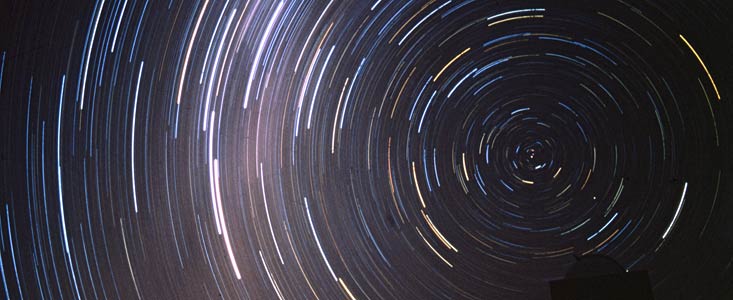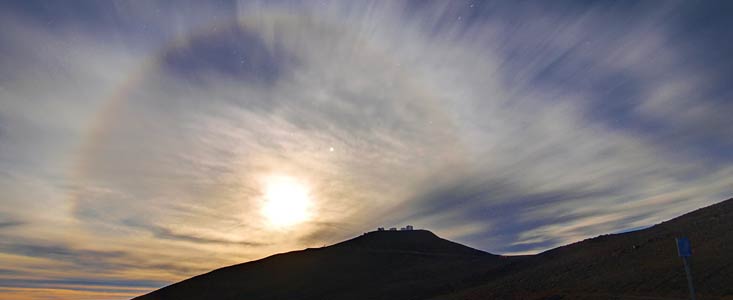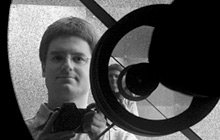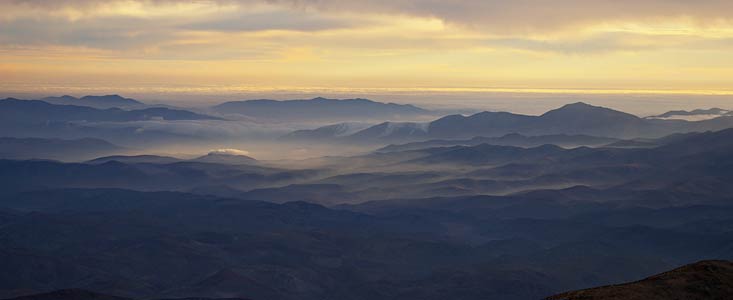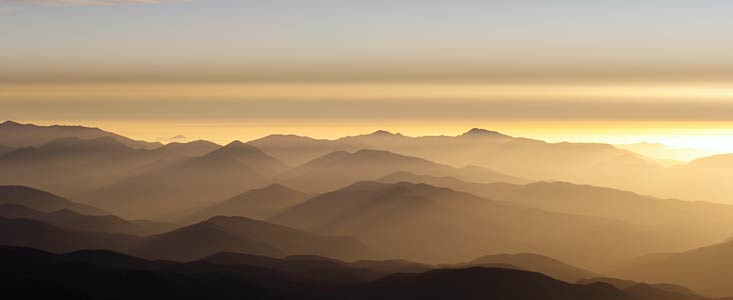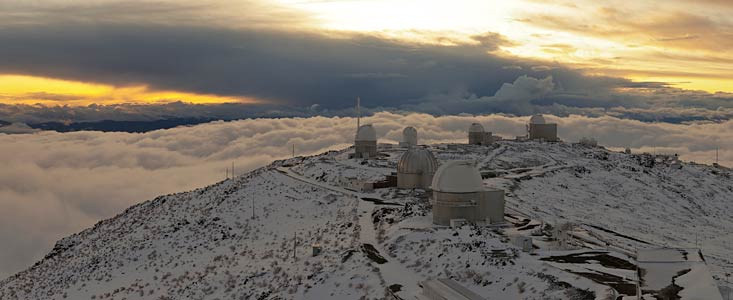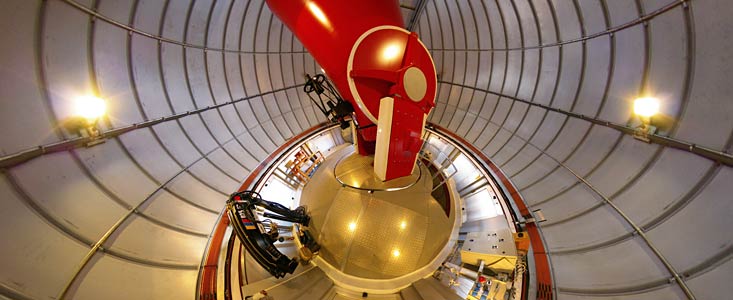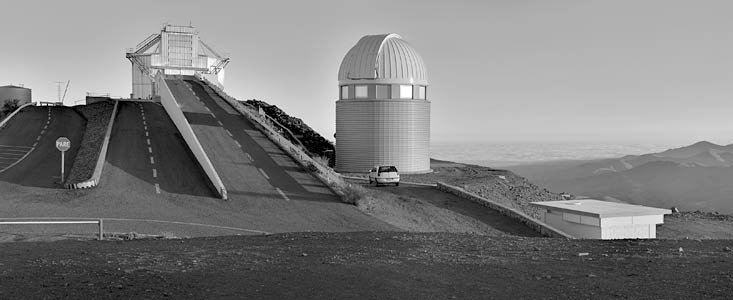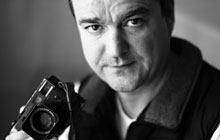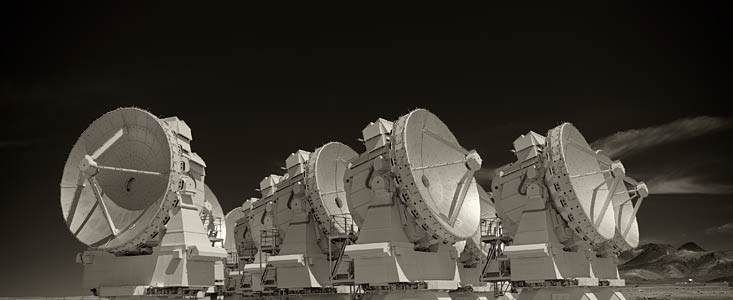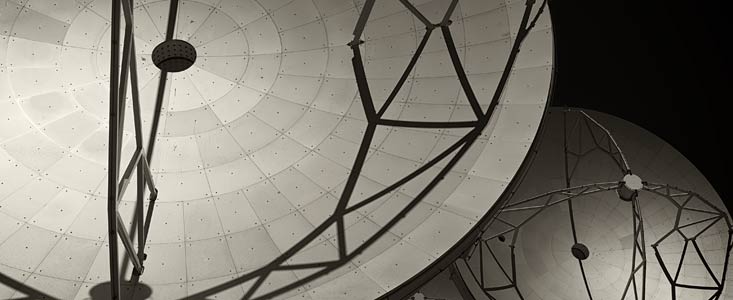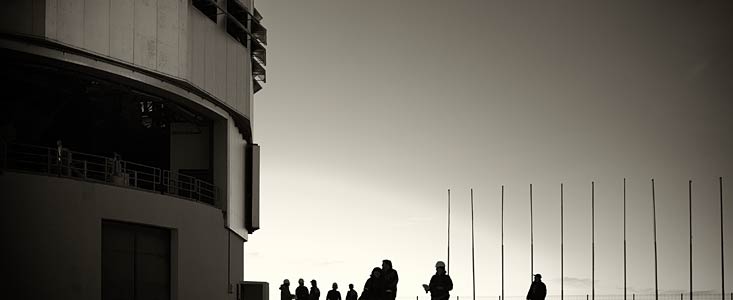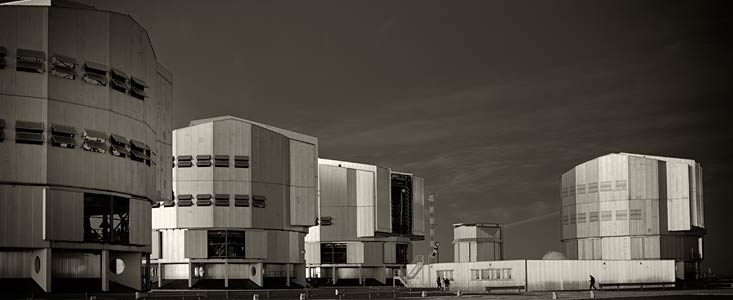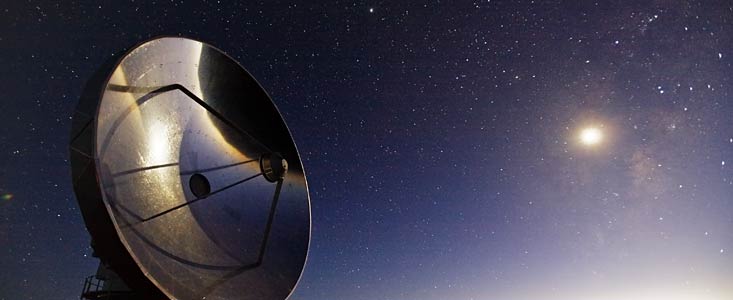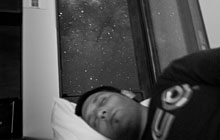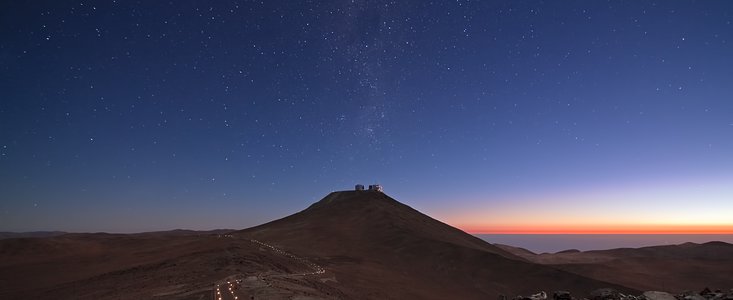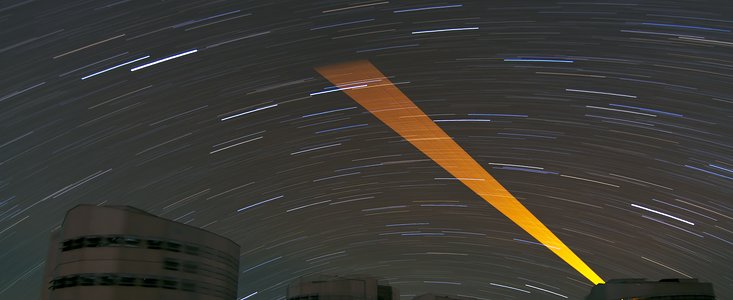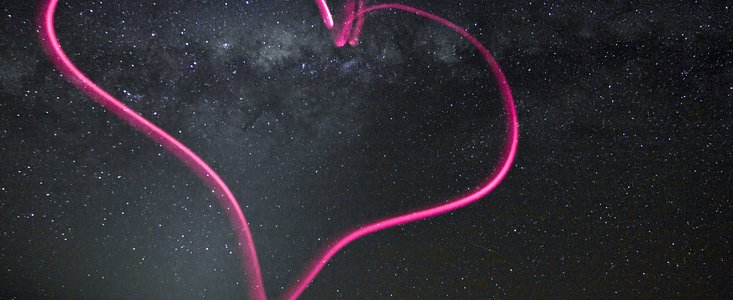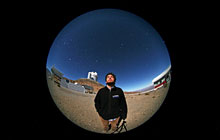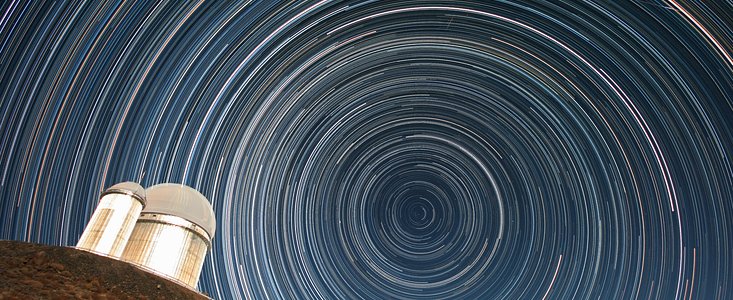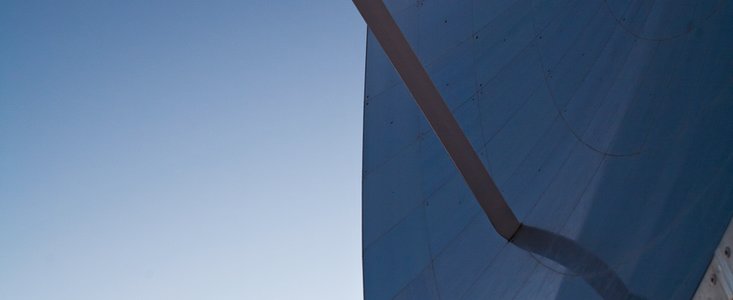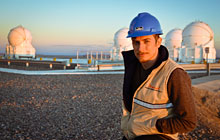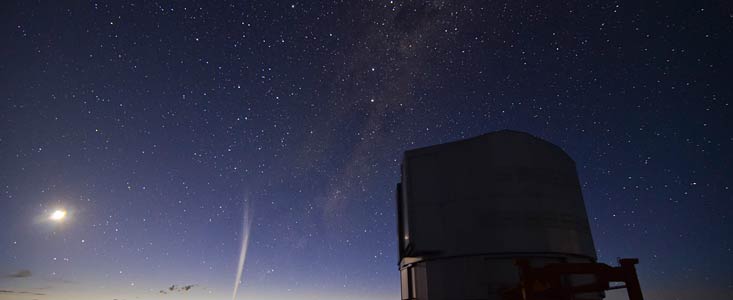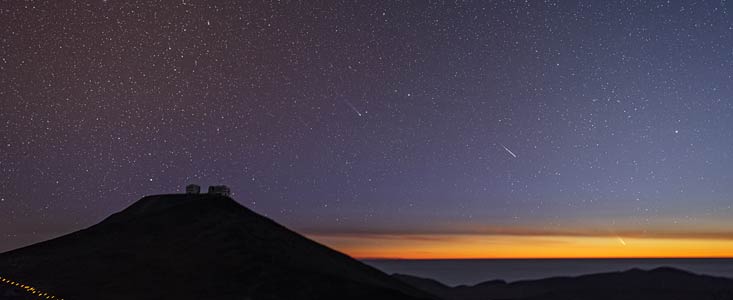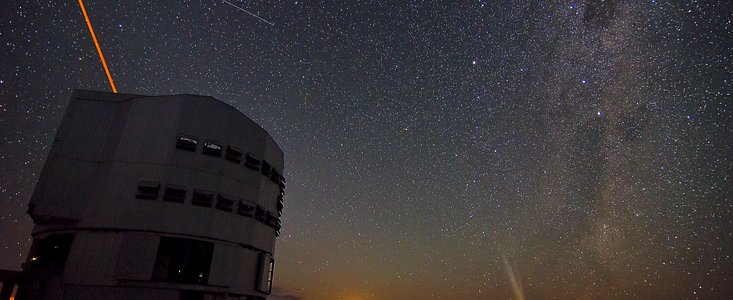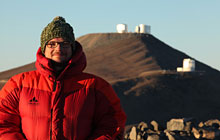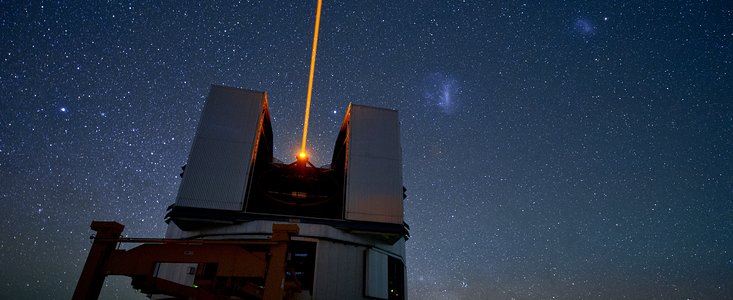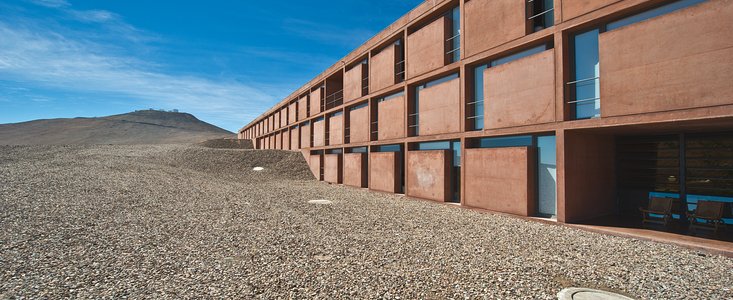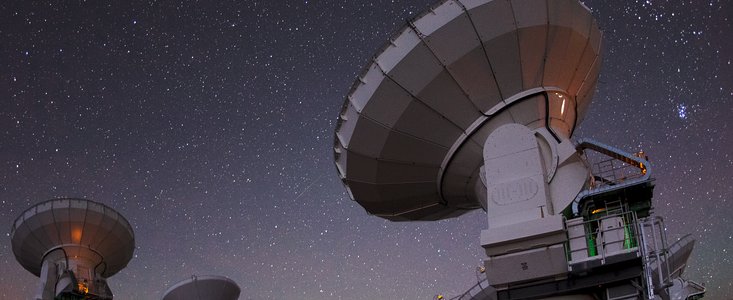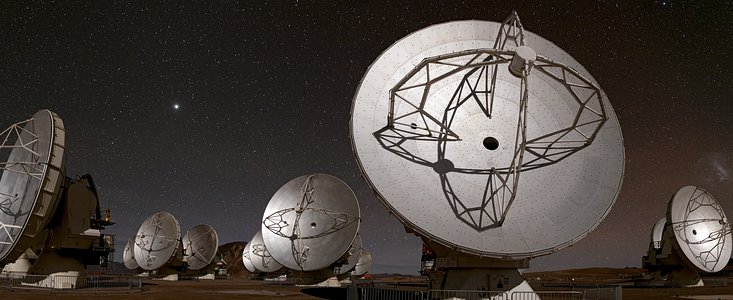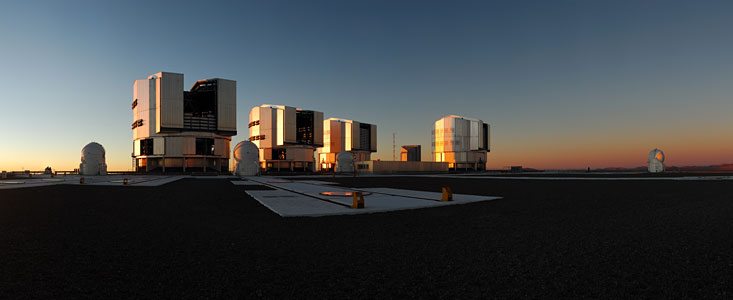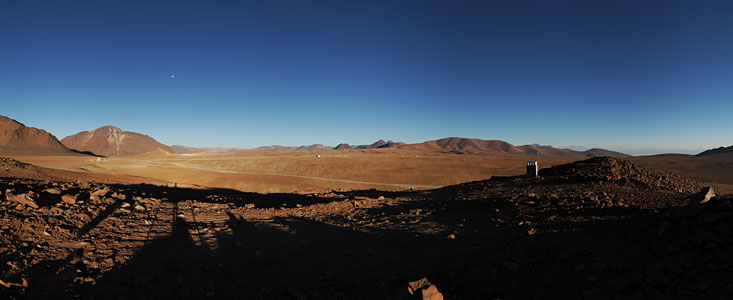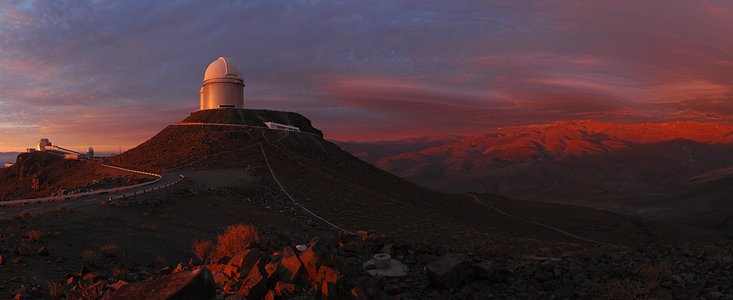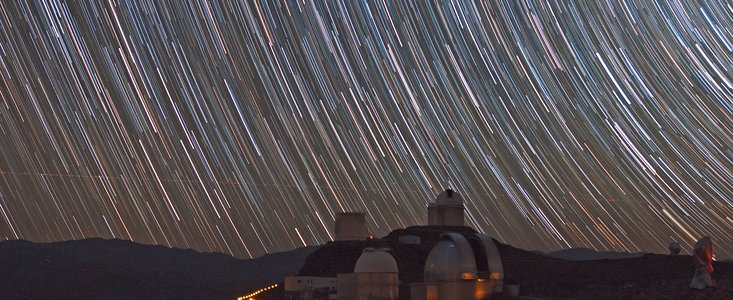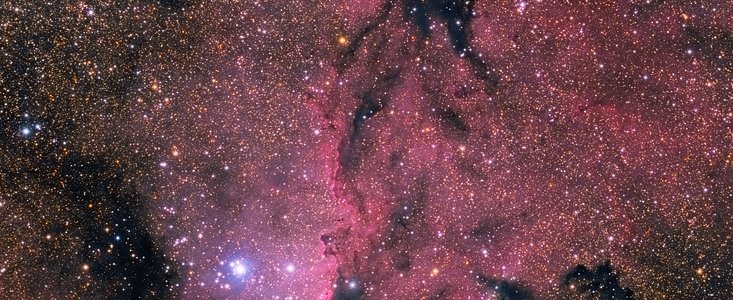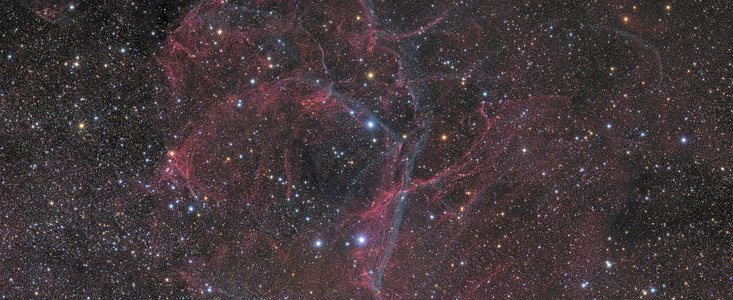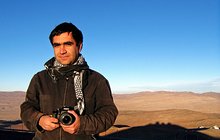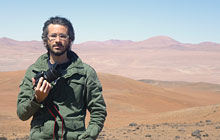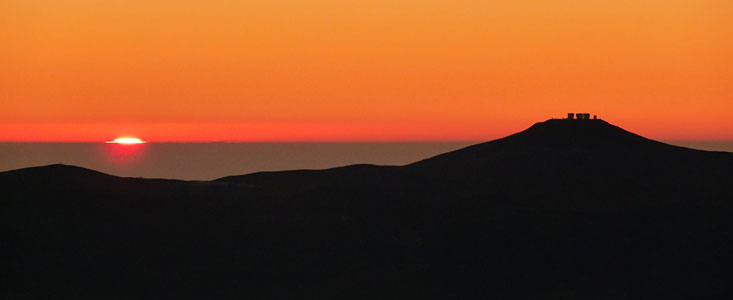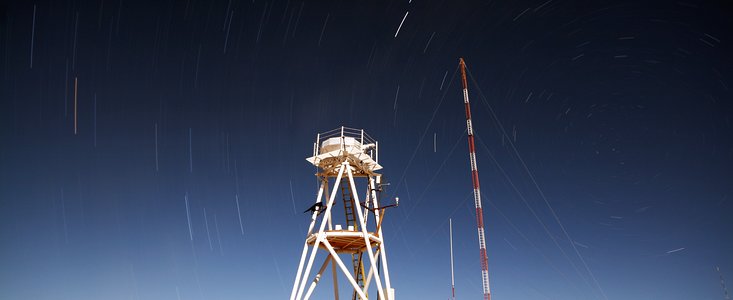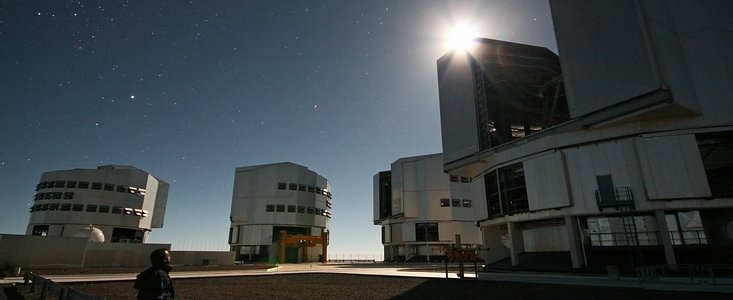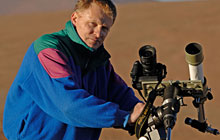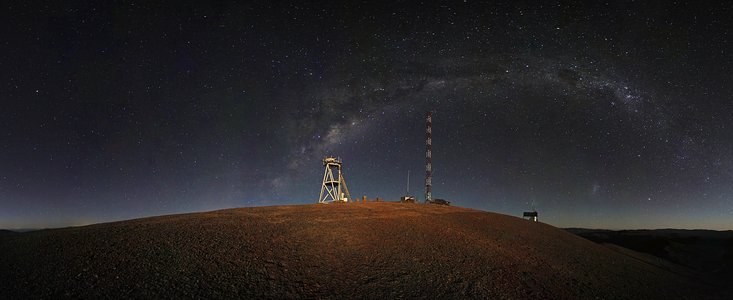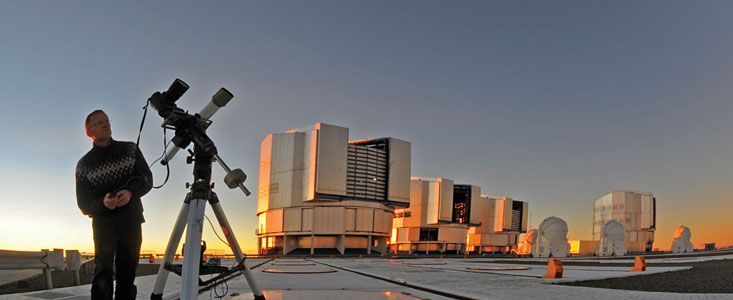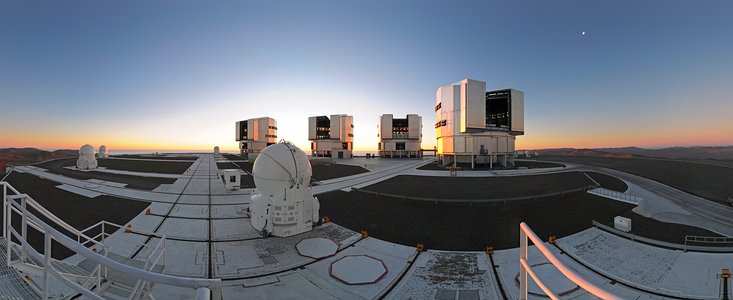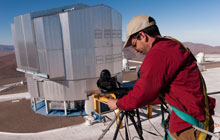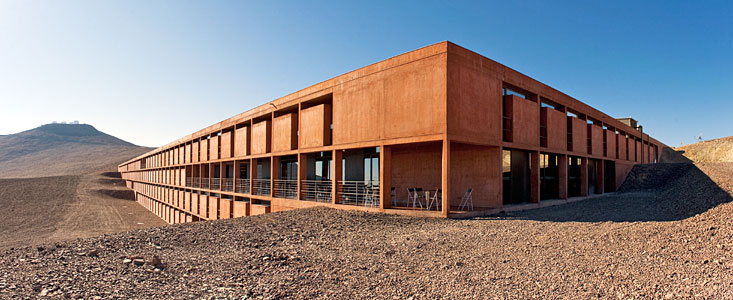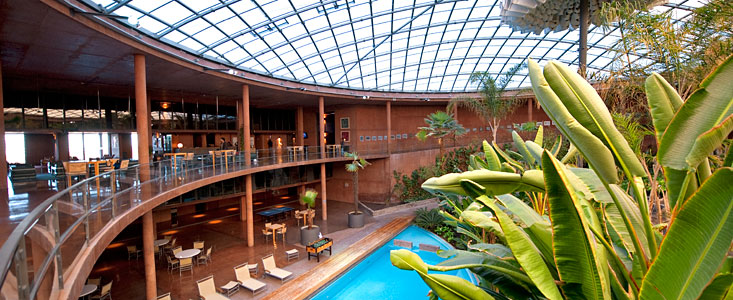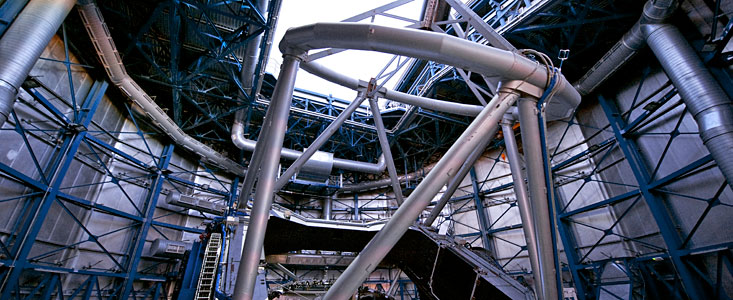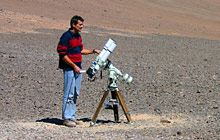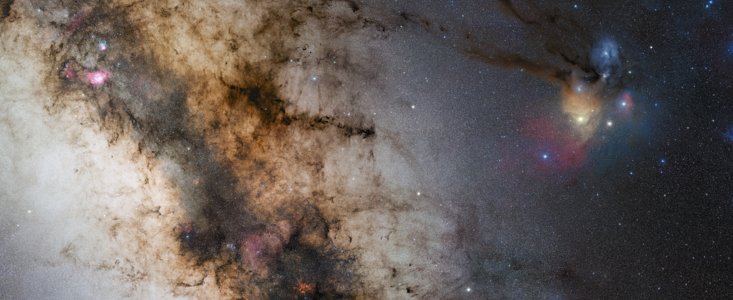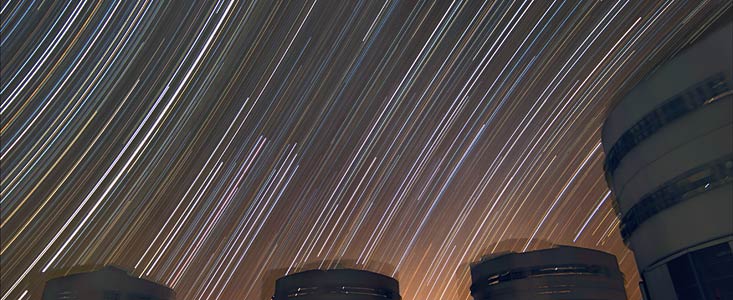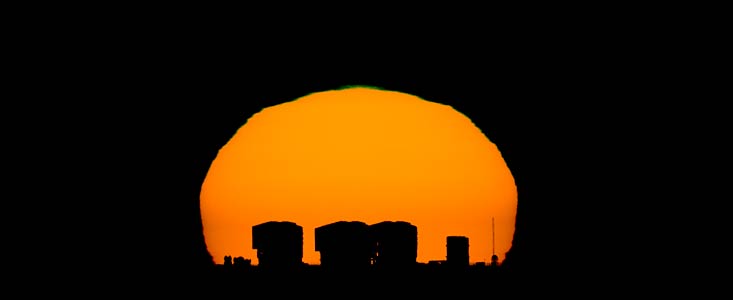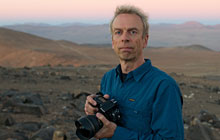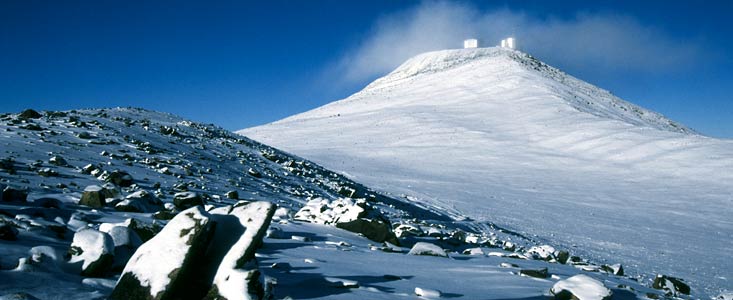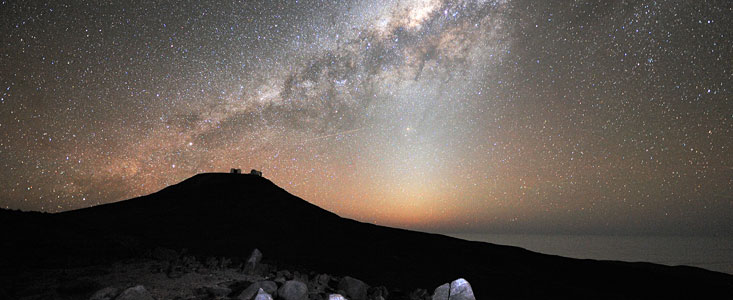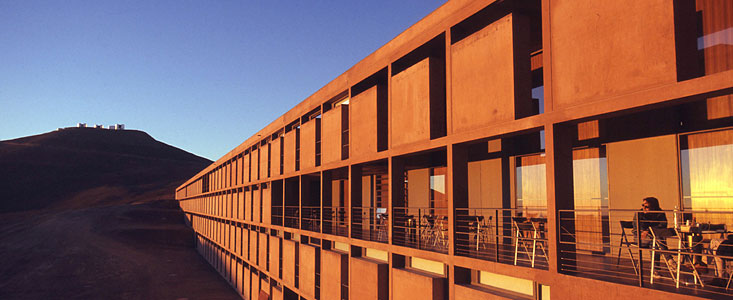ESO Photo Ambassadors
The dark Chilean sky at ESO sites in the Atacama Desert is among the best places on Earth for observing the stars. Professional astronomers can benefit here from the advanced instruments provided for them by ESO in order to find answers to the many questions we have about the Universe. But apart from offering professional astronomers access to the latest technologies in this favourable environment, ESO also encourages members of its staff who are amateur astronomers in their free time to take advantage of the clear skies.
The ESO Department of Communication has proudly accepted night-sky photographers with special ties to ESO as ESO Photo Ambassadors, assisting them whenever possible and further promoting their photos, so as to bring astronomy closer to people. These are individuals who have applied to join the network and have surprised us with astonishing views of ESO sites and the Chilean skies.
We are currently in the process of re-evaluating our network of Photo Ambassadors with the view to ensure relevance for members and ESO, and improve the diversity of the network.
While we will not be accepting new members during this time, you can continue to express your interest in becoming a Photo Ambassador by emailing
us at osandu@partner.eso.org with some of your
photos from the ESO sites attached or a link to where we can find them.
A ESOcast video Compilation including the Photo Ambassadors
- Gerhard Hüdepohl
- Stéphane Guisard
- José Francisco Salgado
- Serge Brunier
- Gianluca Lombardi
- Farid Char
- José Joaquín Pérez
- Fred Kamphues
- Babak A. Tafreshi
- Christoph Malin
- Gabriel Brammer
- Alexandre Santerne
- Julien Girard
- Stefan Seip
- Malte Tewes
- Roger Wesson
- Carlos A. Duran
- Sergio Otarola Lanio
- Adhemar M. Duro Jr
- Alexandru Tudorică
- Petr Horálek
- Miguel Claro
- Heiko Sommer
- Alessandro Caproni
- Juan Carlos Muñoz
- Alberto Ghizzi Panizza
- Zdenek Bardon
- Daniele Gasparri
- Jordi Busqué
ESO Photo Ambassador Jordi Busqué
Jordi Busqué is a photojournalist, astrophysicist and science communicator from Barcelona who divides his time between photojournalism and science photography. He specialises in stories about vanishing cultures and social changes happening in Latin America, mostly in Bolivia, Peru and Chile. Prior to his career in photography, he worked as an astrophysicist at the University of Barcelona and the Institute of Astrophysics in Paris. He now communicates the importance of astronomy and the sciences in general through his photographs and texts, at the same time raising awareness of the problem of light pollution.
His photographs and texts have been published in National Geographic Magazine (Jordi is one of the photographers of the National Geographic Image Collection), Geo, Stern, Days Japan, El País Semanal, Science et Vie, and Terre Sauvage among others.
ESO Photo Ambassador Daniele Gasparri
Daniele Gasparri was born in 1983 in a small town in the centre of Italy, where the sky was still dark enough to see the Universe. He first observed the Moon when he was 10 and it was love at first sight.
He started taking pictures of the sky in the late 90s, before attending the University of Bologna and graduating in Astrophysics and Cosmology.
In 2018 he realised his dream of moving to the Atacama desert, where the sky is so dark that the Milky Way can cast shadows on the ground. He is actually doing a PhD in astronomy and planetary science at Universidad de Atacama.
Daniele is also a professional science writer and communicator. He has published 35 books about astronomy and many outreach articles in astronomy magazines all over the world.
From the pristine sky of the Atacama desert, Daniele is constantly looking at the beauty of the Universe. The marvellous colours, the smooth contrasts, the delicates shapes, the unimaginable distances… they just need to be captured by a camera and shared with the world.
ESO Photo Ambassador Zdenek Bardon
Born in 1961 in Czechia, Zdenek has been an amateur astronomer for more than 45 years. His first telescopes were made out of cardboard tubes and lenses from his grandmother’s glasses. A number of years ago he built a fully robotic observatory in his garden. It is able to capture images throughout the night essentially on its own, with the only human input being made from the comfort of the living room; hence, he started calling this endeavour “Astronomy in Slippers”. The construction of this observatory took over eight years of work in the garage and it has served as a model for industrial robotisation of much larger observatories over the entire world. This effort has also brought Zdenek work opportunities in European organisations such as ESO and ESA.
Zdenek is the founder (in 2005) and chairman of a popular astrophotography competition called Czech Astrophotography of the Month. He is also a member of the Czech Astronomical Society and the Slovak Union of Astronomers.
Zdenek is an avid astrophotographer and therefore cannot miss a chance to capture an image of the Milky Way, especially in places such as La Silla, where the night is so very dark.
ESO Photo Ambassador Alberto Ghizzi Panizza
Born in Parma in 1975, Alberto Ghizzi Panizza has been interested in photography since childhood. He started using digital cameras in 1998 with a 0.06 megapixel model. He is deeply fond of nature and animals in their various guises and is always looking for the beauty of the world around us and finding his main source of inspiration in it.
Recognised as one of the top Italian photographers, he collaborates with various international photographic agencies, publishes photos and articles in numerous Italian and foreign magazines, both for web and print, and regularly delivers workshops, courses, exhibitions and presentations all over the world.
He has received over forty national and international awards, among which are: first prize at the Natural Worlds International Photo Contest; Not Indoor Photographer of the Year 2016.
Since 2013 he has been a member of Nikon Professional Services. He is deputy chairman of “Associazione Travel Photo Experience”, a master of the Nikon School programme and a Nital and Nikon Europe collaborator. In 2015 his macro made the cover of the European magazine Nikon Pro. In 2016 he participated in the Xposure International Photography Festival in the UAE along with internationally renowned photographers.
In 2015 and 2016 he compiled a reportage for Nikon and ESO at the observatory sites in Chile, testing the new D810A camera.
In 2017 he did a shooting for Nikon Europe and some of his images were used to celebrate Nikon's 100th anniversary.
ESO Photo Ambassador Juan Carlos Muñoz
Juan Carlos Muñoz is currently a Media Officer at the ESO Headquarters in Germany. He was born in 1982 in Don Benito, Spain, and would have become a biologist had he got a microscope instead of a telescope as a gift from his parents. After obtaining his PhD in Astrophysics in Madrid in 2010, he started working as a postdoc at the National Radio Astronomy Observatory in Charlottesville, USA. In 2013 he moved to Chile as an ESO Fellow and from 2015 to 2020 has worked as a staff astronomer.
After some early (let's say uneven) attempts at astrophotography many years ago in the days of film cameras, his interest in astrophotography was rekindled by Chile's breathtaking night sky. Having worked at Paranal has offered Juan Carlos unique opportunities to pursue his exciting hobby in an unparalleled location. Despite having spent a few hundred nights there already, every sunset, sunrise or view of the Milky Way still felt like something new and unexpected for him. He hopes his pictures help others feel what it is like to look at the night sky from one of the darkest and most barren locations on Earth.
ESO Photo Ambassador Alessandro Caproni
Alessandro Caproni was born in Cagliari, Italy and has been living in Garching, Germany since 2003, with a break of two years in Chile from 2009 to 2011. Alessandro works at the European Southern Observatory as a software developer specialising in common infrastructure for the Atacama Large Millimeter/submillimeter Array (ALMA) radio telescope on the Chajnantor plateau, in Chile's Atacama desert. In his spare time, Alessandro likes to swim, cycle and kayak, sports that allow him to experience uncontaminated places and an intimate contact with nature.
Alessandro has for many years been fascinated by photography and nature. He began experimenting with film cameras and eventually moved to DSLR technology. During his stays in Chile, on frequent duty trips to the telescopes, he had the opportunity to capture the beauty of the Chilean skies. In his spare time and on holidays he visited Chile and other countries in South America, photographing the pristine beauty of nature. Back in Europe he continued to look for interesting locations, keeping travel photography as his focus. Frequent duty trips to ESO premises allow Alessandro to continue enjoying the beauty of the Southern Hemisphere. What started as a hobby became a real passion, resulting in photo material that has been featured on many dedicated websites and in press releases.
Alessandro's interest in photography ranges from landscape, black and white, long exposure and people to astrophotography. Through his work he aims to communicate his emotions when experiencing the beauty of nature or to simply capture the glow of light shining through a window. Sometimes finding an interesting spot is more important than reaching technical perfection.
ESO Photo Ambassador Heiko Sommer
Heiko was born in Germany and has been working at ESO's Headquarters in Garching bei München since 2001, during which time the ALMA project, as well as other projects, have provided him with exciting travel and photo opportunities. He considers taking pictures as the easiest form of creative expression and as an excuse to travel and explore sites more slowly. When on duty at the observatories, a photo tour is a refreshing break from the work-sleep-eat cycle.
Heiko’s goal is to show scenes as he perceives them, sometimes including silly associations if he observed any. It is his (as yet unfulfilled) wish to also make environmental portraits of people rather than simply take snapshots. He enjoys sharing ideas, software, or knowledge) for example, by making contributions to OpenStreetMap. He would be very happy if his published ESO photos communicated a sense of beauty or fun to other people upon seeing them.
ESO Photo Ambassador Miguel Claro
Born in 1977 in the north of Portugal, and today based in Lisbon, Miguel Claro is a Portuguese professional photographer, author and science communicator in the astronomy field. He is the official astrophotographer for the Dark Sky Alqueva Reserve — the first starlight tourism destination in the world, located in the eastern part of Portugal’s south–central Alentejo Province. Miguel is a photographer member of TWAN (The World at Night) international project and a member of the photo workshop team Fotonature. He collaborates with National Geographic (Portugal), Ciel et Espace (France), and Astronomy (USA). He is the president of the jury for the international Photo Nightscape Awards that are presented annually in Paris. Miguel has been a lecturer in two presentations of TEDx and is the author of the astronomy and photography book Astrofotografia — Imagens à luz das estrelas in Portuguese and the new photo art book Dark Sky Alqueva — O Destino das Estrelas / A Star Destination published by Centro Atlântico. He was the protagonist of an article entitled Best Edit in National Geographic, and was also shortlisted twice for Astronomy Photographer of the Year by the Royal Observatory of Greenwich. His images have travelled the world and have been published in many different media outlets, from the written press to TV stations, including some of the most prestigious international magazines and web pages such as NASA’s Astronomy Picture of the Day.
ESO Photo Ambassador Petr Horálek
Born in 1986 in Czechia, Petr studied Theoretical Physics and Astrophysics at Masaryk University Brno. After his studies he worked briefly as an observer of fireballs at the Department for Interplanetary Matter of the Astronomical Institute of Academy of Sciences of Czechia. During this period he fell in love with astrophotography and decided to take a year-long trip around the world to improve his skills in that field.
As citizen of a light-polluted Czechia, he decided to capture the night skies above the naturally dark places in the world to show people in polluted cities what are they missing (not only) above their heads. A long route through the Canary Islands, Australia, New Zealand, the Cook Islands and South Africa brought him in the end into the heart of the Atacama Desert at ESO’s La Silla and Paranal Observatory in 2015.
Petr specialises in photographing rare night-sky phenomena. His images capture unique moments, which he calls “pearls of astronomy”, that add to the immeasurable beauty of a dark starry sky. Something, he thinks that everyone should see at some point in their lives.
ESO Photo Ambassador Alexandru Tudorică
Born in 1987 in Romania, Alexandru Tudorică has always been fascinated by science and technology. After completing a BSc in Nuclear Engineering at the University of Bucharest, Alexandru continued to follow his passion with an MSc and PhD in astrophysics and cosmology at the University of Bonn, Germany.
At the age of 15, he borrowed an old film camera and so began his quest to capture the beauties of the night sky. He has been fortunate enough to visit many of the top astronomical observatories, where he can frequently run outside from the control room, and take as many pictures and experiment with timelapse for as long as his limited time allows. His images have been published and featured in magazines, books and exhibitions all over the world. His interest ranges from technical photography to landscape astrophotography, with a strong passion for timelapse, limited at the moment only by technical constraints.
Through astrophotography, Alex hopes to bring art and science together for the general public and inspire people to spend more time thinking about and enjoying our tremendously beautiful Universe. Alex is also an enthusiastic mountaineer, often carrying heavy photographic equipment to the highest peaks, when he's not stargazing with a small telescope or enjoying the experience of a pristine sky with the naked eye.
ESO Photo Ambassador Adhemar M. Duro Jr
Adhemar was born in 1972 in Rio de Janeiro. Today, he is living in Santa Catarina, Brazil where he has been working since 1998 as a faculty member at the Univali Foundation (Universidade do Vale do Itajaí).
He started doing photography using his first DSLR in 2009 and was immediately attracted by wildlife, especially birds. His passion for nature and the hunt for a suitable dark sky for astrophotography led him to visit the Atacama Desert in 2011 for the first time, where he developed his nightscape and time-lapse photography skills.
Since 2013 he has been a regular guest at the ALMA Observatory, where he has been conducting workshops about astronomical landscape photography for the ALMA employees, as part of the ARA — ALMA Recreational Activities.
ESO Photo Ambassador Sergio Otarola Lanio
Born in 1979 in Viña del Mar, Chile, Sergio is a former avionics technician from the Chilean Air Force, currently working as Electronic Technician at the ALMA (Atacama Large Millimeter/submillimeter Array) Observatory. As an amateur, he started learning photography through using his first DSLR about four years ago, when he joined the ALMA Front End Team. Since then, through the viewfinder of his camera, Sergio has always been looking for interesting views of the activities carried out in the observatory, as well as the amazing landscapes, wildlife and nightscapes surrounding the ALMA site. He enjoys his passion for photography as a way to share with people the beautiful and dramatic views of the Atacama Desert.
ESO Photo Ambassador Carlos A. Duran
Born in 1977 in Temuco, Southern Chile, Carlos is an Electronics Engineer with a Masters degree. He studied at Pontificia Universidad Católica de Chile, in Santiago, where he has lived since he was a young boy.
He joined ESO in 2004, and since then he has been working for the Atacama Pathfinder EXperiment, APEX. Here he became fascinated by the Chilean desert and developed a deep passion for photography. He enjoys making landscape photos, but also portraits, experimenting with techniques and formats. The site of APEX — the Chajnantor Plateau — has particularly caught his imagination, because of its deep dark blue sky and surreal saturated colours.
ESO Photo Ambassador Roger Wesson
Originally from the south east of England, Roger Wesson first visited Chile while backpacking around South America in 2005. Since September 2011 he has lived in Santiago, and spends 80 nights a year supporting operations at Paranal. A keen traveler, Roger likes to visit remote and interesting parts of the world and photograph them. Astronomy often provides the motivation for his journeys, and particular highlights have included seeing a total solar eclipse in western Zambia, and watching the northern lights while en route to the site of a volcanic eruption in Iceland. Having access to the dark skies and incredible landscapes of northern Chile provides him with ample opportunities to further explore the world of nighttime photography.
ESO Photo Ambassador Malte Tewes
Born in 1984 in southern Germany, Malte Tewes is an astronomer working in the field of cosmology with gravitational lensing. He did his PhD at the Ecole Polytechnique Fédérale de Lausanne (EPFL) in Switzerland. Since 2008, Malte has carried out numerous observing runs at the telescopes at ESO’s La Silla Observatory, most often at the Swiss 1.2-metre Leonhard Euler Telescope. Fascinated by the combination of La Silla's scenic landscape and its high-tech installations, he enjoys spending any free time during his stays hiking around with his camera, day or night.
Despite turning astrophysics into his profession, Malte remains an avid stargazer and amateur telescope maker. He takes great pleasure in exploiting the possibilities of digital imaging for both artistic and scientific purposes. However, in terms of aesthetic experience, he thinks that the direct view through a telescope under dark skies is hard to beat. He has been actively involved in the amateur astronomy association of EPFL since 2003, serving as its president for two years.
ESO Photo Ambassador Stefan Seip
Stefan Seip is a professional photographer and astrophotographer, living in Stuttgart, a regional capital in the southwest of Germany, and at the heart of Europe. A biologist and IT specialist by training, Stefan decided in 2003 to follow his true calling and started to work as a freelance author and photographer.
Through his outstanding photographs Stefan has gained an impressive international reputation. In German-speaking areas he is well known as the author of several photography books on the sky, the night sky and on astrophotography. In addition, he regularly contributes columns, test reports and features, as well as articles on practical hints, to leading astronomy magazines. His numerous lectures, workshops and stargazing tours allow him to share his knowledge and his passion with a dedicated audience.
Stefan travels around the globe in search of the locations for his stunning images. But he doesn’t always travel alone. At times he works as a tour guide and photography instructor, offering his charges an unparalleled combination of magnificent celestial events, exotic locations, creative techniques and intensive individual instruction. Stefan was a founding member of TWAN (The World at Night), a project that presents extraordinary images of the night-sky set as a backdrop to the world’s great landmarks.
Stefan’s photographic skill set, however, covers much more than sky and astrophotography. This is evident from his love for monochrome fine-art photography.
ESO Photo Ambassador Julien Girard
Julien Girard has been a staff astronomer at ESO since 2009, dividing his time between Santiago and Paranal Observatory, where he is the instrument scientist for VLT/NACO (and soon SPHERE). His own research topics reflect his broad interests, and include the direct imaging of extrasolar planets, searching for brown dwarfs in nearby molecular clouds and studying young circumstellar discs.
Born in 1978 in the French Alps, Julien was always attracted to and fascinated by the night sky. At 20 he moved to the USA and began to work as a student for a large high-energy cosmic ray observatory in the Utah desert. And that was it! His life would be the one of an experimentalist involving trips to unusual places, with unusual equipment, technologies and people.
He is also convinced of the relevance of astronomy and science to society, and helped to organise the first Noche de las Estrellas, which in 2012 gathered around 500 000 participants at 49 sites in Mexico! He also produced the photo exhibition Ella es Astrónoma as part of the International Year of Astronomy (2009).
Julien Girard took up photography in 2002, and through his images is more interested in communicating emotions, rather than achieving the technical perfection he aims for in astronomy.
ESO Photo Ambassador Alexandre Santerne
Born in 1986 in the north of France, Alexandre Santerne did his PhD at the Aix-Marseille University (France) studying transiting extrasolar planets using the CoRoT and Kepler spacecraft. During his PhD, he travelled many times to Chile to use the HARPS spectrograph at La Silla Observatory in order to confirm and weight the planetary candidates discovered by CoRoT. He took advantage of observing with the ESO 3.6-metre telescope to catch the perpetual rotation of the stars over the Earth with his camera. Nowadays, Alexandre travels around the world (including Chile) to pursue his research on extrasolar planets.
Alexandre has been interested in astronomy since his childhood. Before doing his PhD, he was an amateur astronomer, observing and photographing the northern sky. He was also the funding president of an amateur astronomical association that has organised annual star parties in France since the IYA2009. Now a professional astronomer, he keeps the link between professional and amateur astronomy by participating in outreach events, public conferences and by promoting amateur/professional collaborations.
ESO Photo Ambassador Gabriel Brammer
Born in Des Moines, Iowa (USA), Gabriel is an ESA/AURA Astronomer at the Space Telescope Science Institute in Baltimore, Maryland (USA). From 2010 until 2013 he worked as an ESO postdoctoral fellow supporting the operations of the ESO La Silla-Paranal Observatory. For his scientific research he studies the formation and evolution of distant galaxies using the most sophisticated telescopes and instrumentation in the world, including the ESO Very Large Telescope and the Hubble Space Telescope.
Gabriel has long enjoyed the beautiful skies of northern Chile, from his first experience as an undergraduate intern at the Cerro Tololo Inter-American Observatory, to an extended stay at the Departamento de Astronomia at the Universidad de Chile during his PhD, and most recently as a professional astronomer with ESO. Always interested in photography, the recent births of his two children, the landscapes of Chile, and the spectacularly dark skies at Cerro Paranal have provided him with an ideal opportunity to pursue the hobby with some of the best subjects available to a photographer.
ESO Photo Ambassador Christoph Malin
Born in 1969 in southern Germany and today based near Innsbruck, Austria, Christoph was originally a textile engineer and has worked in the fields of garment CAD/CAM system development, including laser and hydro-cutting systems.
In the nineties however, Christoph made his passion for outdoor and landscape photo- and videography and for writing about mountain biking his new job.
He has since worked for many years for various German and Austrian mountain-biking magazines as a senior tech and travel/event editor, which has taken him to many continents. As a professional photographer he has completed many catalogue shoots for bicycle and outdoor manufacturers, as well as extreme mountainbike sports videos, some of which have been shown on worldwide TV networks.
He is also a member of the instructor team for the Austrian Summit Club, holding and developing youth mountainbike riding and outdoor photography courses, and a consultant on bicycle path networks for tourist boards and ski resorts in Austria.
Christoph has made hundreds of trips to the Alps, both by bike and on foot, and has always enjoyed the star-filled skies. In 2010 he took up astrophotography and mountain time-lapse photography to record the clear skies and spectacular views for everyone. During the Austrian The World at Night (TWAN) lecture tour, he was given the task of introducing Babak Tafreshi to some of the most remote mountain locations and peaks in North Tyrol; an experience that changed his life.
The impressive night-sky imaging sessions during that trip forever addicted him to TWAN landscape astrophotography. Since then he has combined his outdoor time-lapse photography and post-processing skills with his mountaineering knowledge to create some of the finest astrophotography time-lapses from dark places throughout the Alps and other remarkable mountain and desert landscapes.
ESO Photo Ambassador Babak A. Tafreshi
Babak is a freelance photographer and cinematographer, science journalist, and astronomy communicator working with all kinds of media. Specialized in nightscape imaging since 90s and with special interest to merge art and science in photography he works primarily with the National Geographic. Babak is the founder and director of The World At Night (TWAN) programme, an international project to produce and present stunning night-sky images above various Earth landscapes. TWAN was designated a special project of the International Year of Astronomy 2009 and this brought Babak into contact with ESO.
Born in 1978 in Iran, he is currently based in Boston, United States, but is always on the move, and could be anywhere, from the heart of Sahara to the Himalayas or Antarctica. Babak is also a contributing photographer for Sky & Telescope magazine, and a board member of Astronomers Without Borders; a US-based organisation that connects people and cultures across the world through a common interest in astronomy. Babak received the 2009 Lennart Nilsson Award, the world’s most recognised award for scientific photography, for his global contribution to night-sky photography.
As a science journalist he was editor of Iranian astronomy magazine, Nojum, from 1997 to 2007. He has contributed to many television and radio programmes on astronomy and space. Besides TWAN imaging, chasing solar eclipses for an astronomy documentary series has taken him to all continents.
ESO Photo Ambassador Fred Kamphues
Fred’s first involvement with ESO projects dates back to 1998 and the development of the Very Large Telescope Interferometer (VLTI) delay lines. He was responsible for their mechanical design and assembly, integration and testing. After his first visit to the Paranal observatory in Chile in 2000 he was keen to immortalise the spectacular technology that was being assembled in the remote Atacama Desert. In 2008 he spent nearly a month in Chile, photographing the various observatories at Paranal, La Silla and Chajnantor. More recently he covered the VLT Laser Guide Star Facility first light event, a project that he was also involved in himself as a project manager at TNO (the Netherlands Organisation for applied scientific research). During the last couple of decades, Fred has worked on various space and ground based astronomy projects, including Gaia and the Thirty Meter Telescope. Fred currently cooperates with TNO on a number of Adaptive Optics projects, including the Laser Projection Subunits for ESO’s Extremely Large Telescope (ELT), currently under construction on Cerro Armazones in the Atacama Desert. He is looking forward to the completion of the ELT and would like to cover the Laser Guide Star Facility first light event in the not too distant future.
ESO Photo Ambassador José Joaquín Pérez
José has been taking astrophotographs for over ten years, but his fascination for the sky goes back to his childhood, when he lived in the region of Coquimbo, Chile, a place with some of the most transparent and darkest skies on the planet. He used a telescope for the first time at the Tololito observatory, which belongs to the Seminario Conciliar of La Serena, and is still under the direction of the priest Juan Bautista Picetti. Picetti had the patience to answer José’s endless questions for whole afternoons and gave him his first telescope: a 3-inch f/12 refractor, with a wooden tripod and two eyepieces. José still has this telescope, which introduced him to the phases of the Moon, the rings of Saturn, the moons of Jupiter and the brightest globular clusters in the Southern Hemisphere.
Currently José is an agricultural engineer in a transnational company dedicated to the protection of crops in central Chile. When there’s a new Moon he plans trips to places with great skies near his house or he goes to the north region of Chile, alone or with other astrophotographer friends.
José shares his hobby by publishing his images in magazines, at public conferences and on his website.
ESO Photo Ambassador Farid Char
Born in 1983, and now living in Antofagasta (Chile), Farid Char works at ESO’s La Silla–Paranal Observatory as member of the ELT site-testing team, and he also works as tourist guide for the VLT. He has a degree in psychology, but is a serious amateur astronomer with several years of experience in observation, instrumentation and outreach.
Farid enjoys travelling and being in touch with different aspects of nature, such as forests, glaciers, valleys, mountains, and of course… deserts. For him the art of photography is exemplified by the best of astrophotography, which portrays the Universe as an amazing artwork full of cosmic jewelry.
His contributions to astronomical projects and popular science events have made him widely recognised in the Chilean amateur community, and his photos have been featured on dedicated websites and press releases. As a passionate stargazer, the use of his spare time to observe the night sky is almost an emotional need. And photographs are the best log of these emotions.
ESO Photo Ambassador Gianluca Lombardi
Born in Taranto (Italy) in 1979, Gianluca Lombardi works as an astronomer at ESO La Silla–Paranal Observatory and has been in charge of the ELT site testing at all Chilean sites since 2007.
Gianluca followed his father into amateur photography, fascinated by the world in which films were still developed in the home-made darkroom in the small alcove just downstairs. The driving concept behind his photographs is to give people the chance to experience the different landscapes and scenery of our planet, and particularly those that are otherwise inaccessible. He always tries to express his feelings by capturing the beauty of nature, in particular through landscapes, wildlife, large-scale subjects and starry skies. He always says he is “honoured to have the opportunity to share with others what he can see with his eyes”.
His photos are published in magazines and books and used at conferences and exhibitions.
ESO Photo Ambassador Serge Brunier
Born in 1958 in Paris, Serge Brunier has been living in the City of Light ever since. He is a prizewinning photographer and author of books that have been translated into ten languages. He has visited the majority of the world's great observatories and has photographed solar eclipses from the most wonderful landscapes on Earth. As a journalist, he is a contributor to many science and astronomical magazines, such as Ciel et Espace, Science et Vie, La Recherche, The Tenmon Guide, Sky and Telescope, as well as popular magazines such as Paris Match.
In 1986, Serge was awarded the French Academy’s Montyon prize for his book Architecture of the Universe, and in 1994, the French Astronomical Society awarded him the Henry–Rey prize. Serge has been awarded the French Astronomy Book of the Year prize twice, in 1997 and in 2007. Also in 2007, his one-hundred-million pixel picture of the Milky Way was shown as a 144 square-metre image in the Palais de la Découverte, the biggest science museum in Paris. The International Astronomical Union (IAU) named asteroid 10943 in his honour and in recognition of his work of science popularisation. During the International Year of Astronomy 2009, Serge participated in the GigaGalaxy project, taking an all-sky, 800-million-pixel picture from ESO’s La Silla and Paranal observatories.
Today, Serge Brunier works on new landscape night sky photos, essentially in Europe, the United States and South America. His photographic work tends to make a link between the breathtaking, very deep images taken by professional astronomers through their giant telescopes and the sky that anyone can see with the unaided eye.
ESO Photo Ambassador José Francisco Salgado
Born in Puerto Rico, José Francisco Salgado lives in Chicago where he works as an astronomer and science visualizer at the Adler Planetarium. He uses his skills in astronomy, education, and visual arts to create multimedia works that communicate science in engaging ways. His education and outreach efforts include an Emmy-nominated astronomy TV news segment and critically acclaimed astronomy films created to accompany live performances of classical music works. These films were named a Special Project of the International Year of Astronomy (IYA2009) and have been presented around the world more than 50 times in 13 countries with orchestras such as the San Francisco Symphony, the Boston Pops, and the Czech National Symphony Orchestra.
Salgado, an avid photographer who has visited more than 17 observatories, experiments with high dynamic range imaging, time-lapse, infrared, and fisheye photography, as well as with stereoscopic photography and video to enhance his multimedia works. Through his work, Salgado seeks to create visually appealing images to provoke curiosity and a sense of wonder about the Earth and the Universe.
ESO Photo Ambassador Stéphane Guisard
Native of the Lorraine region in France, Stéphane Guisard has been living in Chile since 1994, where he works as an Optics engineer at the European Southern Observatory’s Very Large Telescope in the Atacama Desert. He is specialized in active optics, optical alignment and telescope image quality improvement.
Besides working in a professional observatory, Stéphane is also an amateur astronomer, a hobby enjoyed since childhood when he started to build his first telescopes.
What he likes most is taking pictures and time-lapse movies of the night sky in order to share the beauty of the heavens to the public. He takes advantage of the pure and dark skies over the Atacama Desert and Andes Altiplano to make sharp deep sky astrophotographs. His images have been published in many books, magazines and television programmes around the world.
Stéphane also shares his passions for telescope optics, astrophotography, photography and astronomy through lectures at amateur meetings and in schools.
ESO Photo Ambassador Gerhard Hüdepohl
Gerhard Hüdepohl was born in Germany and has been living in Chile since 1997, where he works as an Electronics Engineer at the European Southern Observatory’s Very Large Telescope on Cerro Paranal.
Since his early years he has been fascinated by nature and started to capture its beauty with his camera.
In Chile he frequently travels through the Atacama Desert to photograph remote and little known places. What he enjoys most is to explore locations where nature is still untouched, such as Antarctica and subantarctic islands, the temperate rainforests and glaciers of Patagonia or the jungle and mountains of Bolivia.
As a private pilot Gerhard Hüdepohl often takes the opportunity to fly over desert and mountain landscapes to capture them from the air.
His photos have been widely published in books, magazines, exhibitions and calendars.
